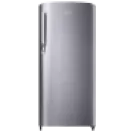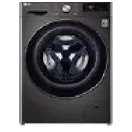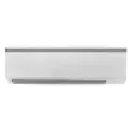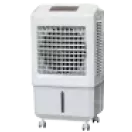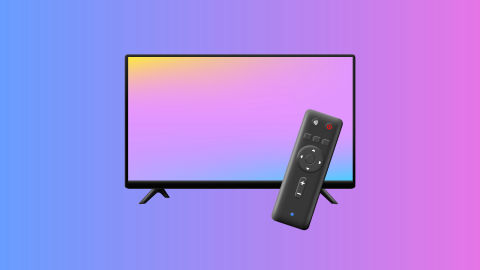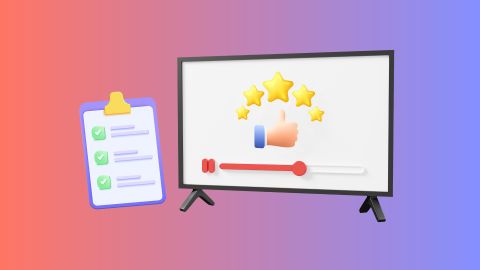Peruse the collection of AC on Bajaj Mall. Alternatively, visit any of Bajaj Finserv’s 1.5 lakh partner stores in 4,000 cities to select a model that fits your cleaning preferences. Enjoy Easy EMI and zero down payment offers exclusively with Bajaj Finserv.
3 min
12-Feb-2025
Cleaning your AC coils ensures the efficient operation and longevity of your air conditioning unit. Dirty coils can reduce cooling efficiency, increase energy costs, and lead to potential system failure. To clean your aircon coils, start by turning off the power, removing any debris, and using a coil cleaner. Rinse thoroughly and allow the coils to dry before reassembling the unit. Regular cleaning will maintain your system's health and performance, especially during peak summer months.
Peruse the collection of AC on Bajaj Mall. Alternatively, visit any of Bajaj Finserv’s 1.5 lakh partner stores in 4,000 cities to select a model that fits your cleaning preferences. Enjoy Easy EMI and zero down payment offers exclusively with Bajaj Finserv.
Peruse the collection of AC on Bajaj Mall. Alternatively, visit any of Bajaj Finserv’s 1.5 lakh partner stores in 4,000 cities to select a model that fits your cleaning preferences. Enjoy Easy EMI and zero down payment offers exclusively with Bajaj Finserv.
Importance of clean AC coils
Keeping your AC coils clean is essential for maintaining the overall efficiency and longevity of your air conditioner. The coils in your AC, specifically the evaporator, and condenser coils, play a vital role in heat exchange. The evaporator coils absorb heat from your indoor air, while the condenser coils release it outside. Over time, these coils accumulate dust, dirt, and grime, which hinders their ability to function properly.
When the coils are dirty, your AC has to work harder to cool your space. This increased effort leads to higher energy consumption and, consequently, higher utility bills. A dirty evaporator coil struggles to absorb heat, and a clogged condenser coil cannot efficiently release it, making the system work overtime. Regular cleaning of your AC coils helps ensure proper airflow, efficient operation, better air quality, and a longer lifespan for your air conditioner, saving you money in the long run.
Pros:
Pros:
When the coils are dirty, your AC has to work harder to cool your space. This increased effort leads to higher energy consumption and, consequently, higher utility bills. A dirty evaporator coil struggles to absorb heat, and a clogged condenser coil cannot efficiently release it, making the system work overtime. Regular cleaning of your AC coils helps ensure proper airflow, efficient operation, better air quality, and a longer lifespan for your air conditioner, saving you money in the long run.
Step by step cleaning process for AC coils
- Turn off the power: Before starting, ensure that the AC is switched off and unplugged to avoid electrical accidents.
- Remove the AC cover: If your AC has a removable cover, take it off to access the coils.
- Gather tools and materials:
- Coil cleaner (available at hardware stores or online)
- Soft brush (such as a paintbrush or toothbrush)
- Fin comb (for straightening bent fins)
- Garden hose or spray bottle
- Gloves and safety glasses
- Clean the evaporator coil:
- Use the soft brush to gently remove dirt and dust from the surface of the evaporator coil.
- Spray the coil cleaner directly onto the coil and let it sit for the recommended time to break down any debris.
- After the cleaner has set, gently rinse the coil with a hose or spray bottle.
- Clean the condenser coil:
- Use the same process to clean the condenser coils, which are located on the outside unit.
- Make sure to remove any large debris like leaves or dirt from the area first.
- Straighten any bent fins with a fin comb.
- Check for leaks and issues: Inspect for any leaks, damage, or signs of wear while cleaning.
- Reassemble the unit: Once the coils are clean and dry, reassemble the AC and ensure that everything is securely back in place.
- Regular maintenance: Clean the AC coils every 6 months to maintain optimum efficiency.
DIY vs professional cleaning: Pros and cons
DIY Cleaning:Pros:
- Cost-effective: Saves money on professional services.
- Flexibility: Clean at your convenience.
- Learning experience: Gain skills and knowledge on AC maintenance.
- Time-consuming: Requires effort and patience.
- Risk of damage: Incorrect cleaning can damage delicate parts.
- Limited expertise: Might miss issues that professionals would notice.
Pros:
- Expert service: Trained technicians handle the cleaning process.
- Quick and efficient: Saves time and effort.
- Comprehensive: Professionals check for underlying issues while cleaning.
- Expensive: Costs can add up over time.
- Scheduling: Might need to wait for an appointment.
Common mistakes to avoid when cleaning AC coils
- Using harsh chemicals: Always use an AC coil cleaner, not household cleaners, to avoid damaging the coils.
- Over-wetting the coils: Excess moisture can damage internal components.
- Not turning off the power: Forgetting to power off the AC unit before cleaning is dangerous.
- Neglecting to clean fins: Bent fins can block airflow. Use a fin comb to straighten them.
- Skipping regular maintenance: Clean coils every 6 months for optimal performance.
Maintenance tips for clean AC coils and efficient operation
- Regular cleaning: Clean the AC coils every 6 months to remove dust, dirt, and grime. This helps in maintaining smooth airflow and cooling efficiency.
- Inspect filters regularly: Check and clean the air filters every month to avoid clogging and ensure optimal airflow.
- Check for leaks: Inspect the system for any refrigerant leaks that can affect performance.
- Use a coil cleaner: Always use an appropriate coil cleaner to avoid damage and ensure thorough cleaning.
- Check refrigerant levels: Ensure that the refrigerant levels are sufficient to maintain cooling efficiency.
- Schedule professional maintenance: Have a professional check-up once a year to inspect the coils, refrigerant levels, and overall performance.
- Protect the outdoor unit: Keep the area around the outdoor unit clean and free of obstructions, such as leaves or debris, for better airflow.
- Monitor system performance: If you notice reduced cooling, longer running times, or increased energy consumption, schedule a service immediately.
Signs your coils need cleaning
- Reduced cooling efficiency: If your AC takes longer to cool the room or struggles to maintain a consistent temperature, it may be a sign that the coils are dirty and obstructing proper heat exchange.
- Increased energy bills: A noticeable spike in your electricity bills could indicate that your AC is working harder than usual due to dirty coils, causing it to consume more energy.
- Frozen evaporator coils: If you notice ice buildup on the evaporator coils, it could mean they are clogged with dirt, impairing airflow and causing the coils to freeze over.
- Warm air from vents: If your AC blows warm or hot air instead of cool air, it suggests that the condenser coil is unable to release heat properly due to dirt and debris buildup.
- Unusual noises: Hissing, rattling, or buzzing noises coming from the unit could indicate that the coils are dirty or obstructed, affecting normal operation.
- Foul odours: If you notice a musty or mouldy smell coming from the AC, it might be due to mould or mildew growth on the dirty coils, especially the evaporator coil.
Explore ACs on Easy EMI with Bajaj Finserv
Check AC attributes and in-depth specifications on Bajaj Mall. Once you have gathered all the necessary details, visit the nearest Bajaj Finserv partner store to pick your preferred ACs. Complete your purchases with Bajaj Finserv’s financing options, which set a predefined spending limit. Furthermore, you have the option to choose a suitable repayment plan, enabling you to pay in Easy EMIs. Bajaj Finserv extends financing options for various electronics.Benefits of shopping with Bajaj Finserv’s financing options
- Affordable pricing: Find the best prices on AC at Bajaj Finserv partner stores, ensuring an affordable purchase that does not compromise on quality.
- Easy EMIs: Bajaj Finserv makes purchasing your AC easy with flexible payment plans through Easy EMIs, giving you the freedom to budget.
- Zero down payment: No upfront cost is required. Selected AC models come with a zero down payment option, so you can pay gradually over time.
- Wide range and accessibility: Access an extensive variety of AC at Bajaj Finserv partner stores, ensuring you get the right fit for your needs.
- Special deals and cashback: Take advantage of exclusive deals and cashback rewards when purchasing an AC with Bajaj Finserv’s financing options.
- Free home delivery available: Get complimentary home delivery on select AC models for a hassle-free shopping experience.
Air conditioners
ACs by capacity
Budget
Star rating
AC comparison
AC buying guide
Bajaj Finserv App for all your financial needs and goals
Trusted by 50 million+ customers in India, Bajaj Finserv App is a one-stop solution for all your financial needs and goals.
You can use the Bajaj Finserv App to:
Apply for loans online, such as Instant Personal Loan, Home Loan, Business Loan, Gold Loan, and more.
You can use the Bajaj Finserv App to:
Apply for loans online, such as Instant Personal Loan, Home Loan, Business Loan, Gold Loan, and more.
- Explore and apply for co-branded credit cards online.
- Invest in fixed deposits and mutual funds on the app.
- Choose from multiple insurance for your health, motor and even pocket insurance, from various insurance providers.
- Pay and manage your bills and recharges using the BBPS platform. Use Bajaj Pay and Bajaj Wallet for quick and simple money transfers and transactions.
- Apply for Insta EMI Card and get a pre-approved limit on the app. Explore over 1 million products on the app that can be purchased from a partner store on Easy EMIs.
- Shop from over 100+ brand partners that offer a diverse range of products and services.
- Use specialised tools like EMI calculators, SIP Calculators
- Check your credit score, download loan statements, and even get quick customer support—all on the app.
Frequently asked questions
Why should I clean my AC coils?
Cleaning AC coils ensures proper heat exchange, improving system efficiency. Dirty coils force the AC to work harder, leading to higher energy consumption, poor performance, and potential long-term damage to the unit.
How do I clean the evaporator coils on my AC?
Start by turning off the AC unit's power. Carefully remove the cover and use a soft brush or vacuum to remove any dust or dirt. Apply a coil cleaner to the coils, let it sit for a few minutes, and then rinse gently. Avoid over-wetting.
Can I clean the AC coils myself?
Yes, cleaning the AC coils yourself is possible with the right tools, such as a coil cleaner and a soft brush. However, if you are unfamiliar with the process, hiring a professional is safer to prevent accidental damage to sensitive components.
How often should I clean my AC coils?
It is best to clean your AC coils at least every 6 months to maintain optimal performance. If you live in a dusty area, you may need to clean them more often to prevent build-up. Regular cleaning also extends the lifespan of the AC.
Why should I clean my AC coils?
Cleaning AC coils ensures proper heat exchange, improving system efficiency. Dirty coils force the AC to work harder, leading to higher energy consumption, poor performance, and potential long-term damage to the unit.
Show More
Show Less

